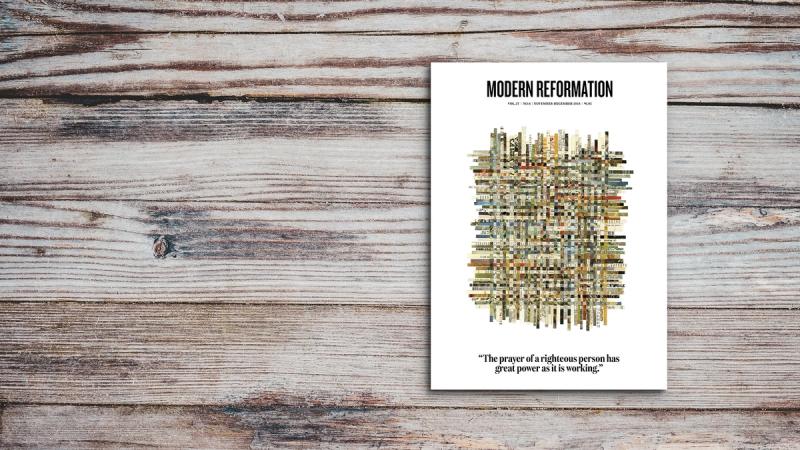“When you say grace you can say it to grown-up Jesus or teenage Jesus or bearded Jesus or whoever you want.”—Will Ferrell, Talladega Nights: The Ballad of Ricky Bobby
No one watches a Will Ferrell movie for an accurate theology of prayer, but if they wanted a general idea of how many North Americans approach prayer, it would be an easy start. Granted, I don’t think they would find many people who seriously pray to teenage/grown-up/bearded Jesus, but it would be pretty easy to find someone who’s praying to a Jesus who looks more like the person praying than the Second Person of the Trinity as revealed in Scripture. This is something we’re all guilty of, to varying degrees. No sinful mortal can completely and accurately conceive of someone so wholly distinct from themselves as the God Man—but if that’s the case, how then do we pray? How can sinful humans, bowed down by their guilt and hindered by the limitations of their mortality, approach a holy God?
Unlike the gods of the ancient Near East, who let humans figure it out for themselves, the Triune God of the universe tells his people (in language they can understand) how they may approach him. Although we see slightly different iterations of it at various points in redemptive history, the principles remain the same—with reverence and awe, in the forgiveness of sins, through his appointed mediator. We no longer need the blood of a bull, and there is no cloud of glory that descends upon an earthly temple. That’s because we have something much better: the blood of the Son of Man and the Holy Spirit, who makes the body of every believer his temple. We see the primary elements of prayer in the Gospel of Matthew, where Jesus teaches his disciples how to pray—not with ostentatious shouting or empty repetition, but privately, in a manner befitting a respectful child with his revered father.
Through prayer, we weave together God’s promises and our unique circumstances. In this issue, our contributors take us deeper into the different aspects of the tapestry of prayer. Paul Miller discusses the necessity of prayer as the driving force of the local church, and Lutheran pastor John Bombaro discusses the organic nature of private and liturgical prayer, showing how both shape our worship. Editor-in-chief Michael Horton explains how the final declaration—“For thine is the kingdom, the power, and the glory forever”—acknowledges the purpose of our prayer as the family of God, and executive editor Eric Landry rounds us out with a biblical-theological exposition of the famous praying man of James 5.
In these turbulent and unsettling times, it’s comforting to know that God does not just tolerate our petitions; he welcomes them and uses them as means to accomplish his sovereign ordering of all events, both good and bad. Let’s draw near to the throne of grace with confidence, knowing that we can cast all our anxieties freely upon him because he cares for us.
Brooke Ventura associate editor







